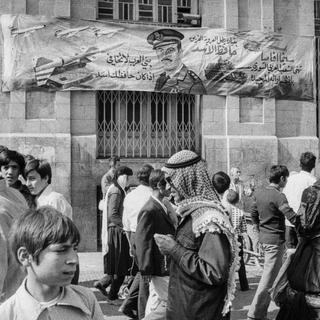


The birth of Syria's 'state of barbarism'
Series'The al-Assad saga' (Part 2/4). The regime set up by Hafez al-Assad after the coup d'état of November 13, 1970, had only one objective: Its own continuity, at any price.
Winter 1986, Beirut. An emaciated man lay dying in a basic cell in the southern suburbs where he was being held hostage. Stricken with cancer, he would not survive his captivity conditions. His name was Michel Seurat, a sociologist, aged 38. His kidnappers called themselves "Islamic Jihad." It was in fact another name for Hezbollah, a pro-Iranian Lebanese Shiite militia protected by Syria, formed in 1982 and officially established in 1985.

Seurat was kidnapped as part of a political-financial blackmail scheme between France and Iran. But his captors were particularly hard on him. Was this at the behest of the Syrian leadership, which had close ties with Hezbollah? Quite possibly, as the young researcher was the first to understand the profound nature of the regime set up by Hafez al-Assad (1930-2000) in 1970. He coined a term that hit home in an article for Esprit magazine, which became the title of a collection of the same name that was subsequently published: Syrie. L'Etat de Barbarie ("Syria. The State of Barbarism," 2012).
The most complicated thing about post-independence Syria was not gaining power, but keeping it. To achieve this, al-Assad put in place a formidable and Machiavellian power structure, as brutal as it was sophisticated. But before he could achieve this, he had to consolidate his position.
You have 88.23% of this article left to read. The rest is for subscribers only.
